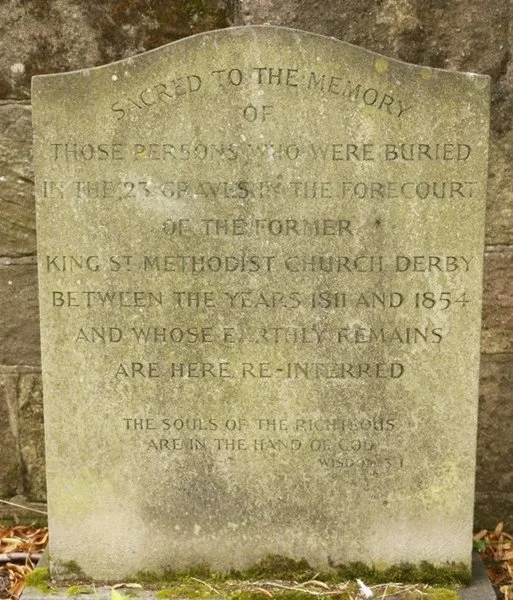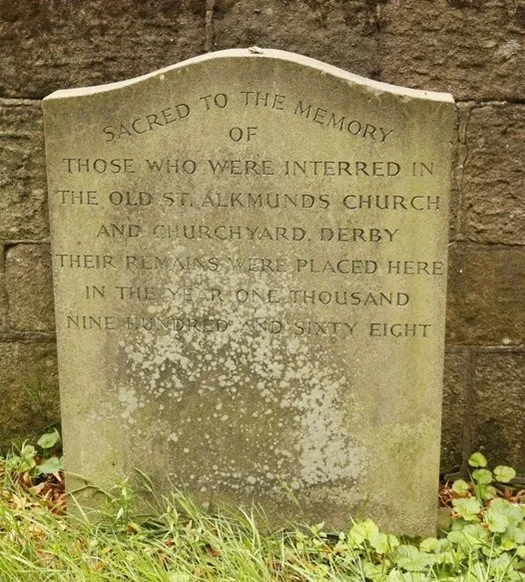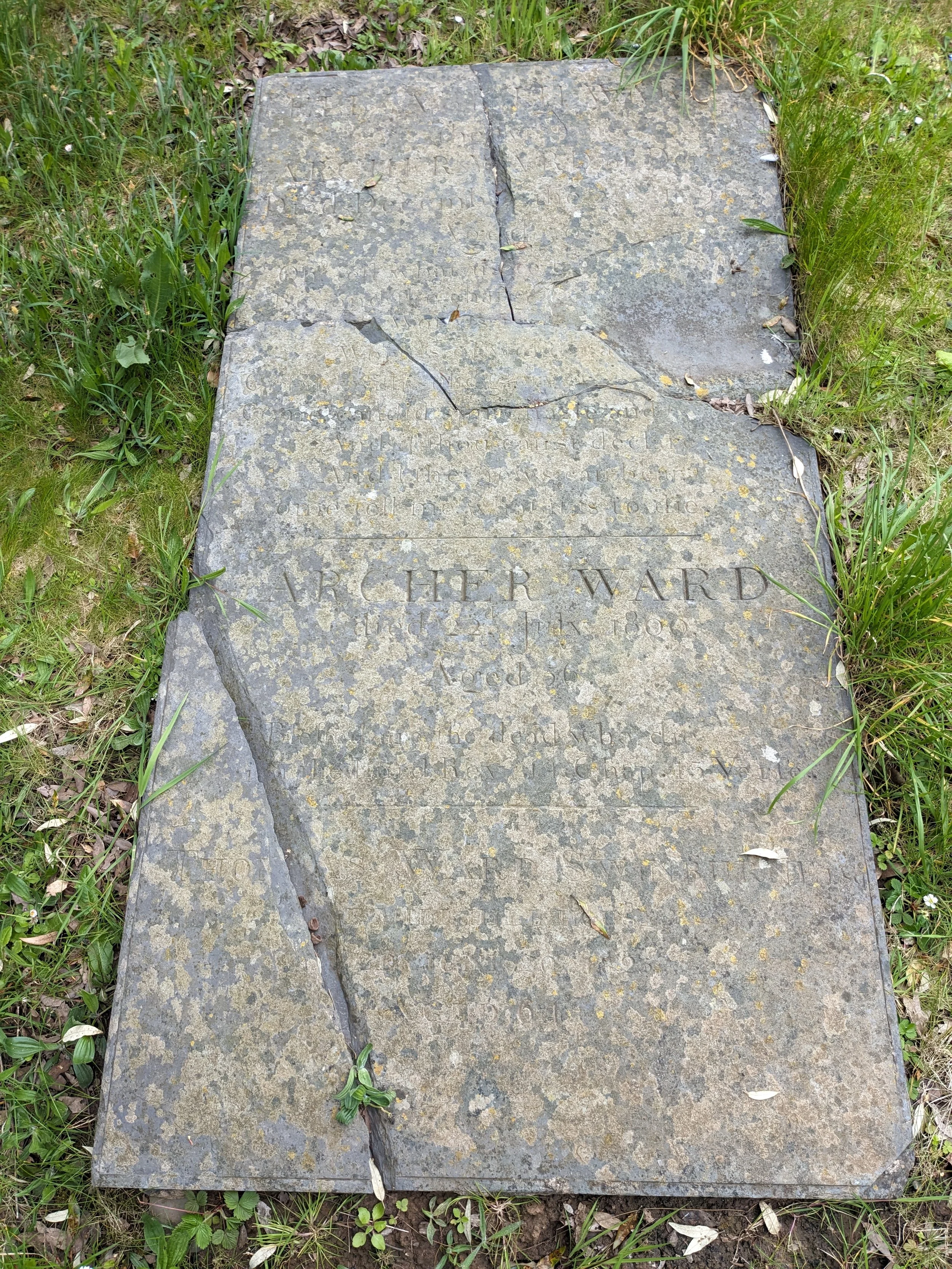Reinterments
///blows.certified.spoil
Details of all those buried in Nottingham Road Cemetery will never be known. When churches were demolished as Derby developed, the remains of those buried at the churches were reinterred in Nottingham Road Cemetery.
King Street Methodist Church closed in 1961 and St Alkmund’s Church was demolished in 1968 to make room for the construction of the Inner Ring Road. Those buried at both churches were moved to Nottingham Road Cemetery and reinterred in common graves.
Two headstones against the Nottingham Road wall mark the sites of those who were reinterred.
The headstones read as follows:
“Sacred to the memory of those persons who were buried in the 23 graves in the forecourt of the former King St Methodist Church Derby between the years 1811 and 1854 and whose earthly remains are here re-interred. The souls of the righteous are in the hand of God”.
“Sacred to the memory of those who were interred in Old St Alkmund’s Church and Churchyard, Derby. Their remains were placed here in the year one thousand nine hundred and sixty-eight”.
St Alkmund’s Church was where Joseph Wright and his family were buried. During the reinterment process, the stone covering their tomb was saved and is now in Derby Cathedral.
Lying flat on the ground nearby is a stone to mark the site of remains from St James the Less Church, Ascot Drive which closed in 1980.
“The churchyard of the former church of Saint James the Less, Osmaston by Derby having been closed, the human remains interred there were removed and buried in this plot in 1981. To mark this event the Bishop of Derby officiated at a service here on 18th June that year”.
In the New Cemetery, surrounded by a low wooden fence is a memorial to Elizabeth Ward, wife of Archer Ward, who died on 26 December 1796 aged 39, Archer Ward, died 22 July 1800 aged 56 and Thomas Ward Swinburn, died 20 June 1825 aged 64. This is the oldest memorial in the cemetery, preceding its construction by half a century. As all three named lived at Mill Hill House in St Werburgh's parish, this stone is believed to mark reinterred remains from St Werburgh's church.




